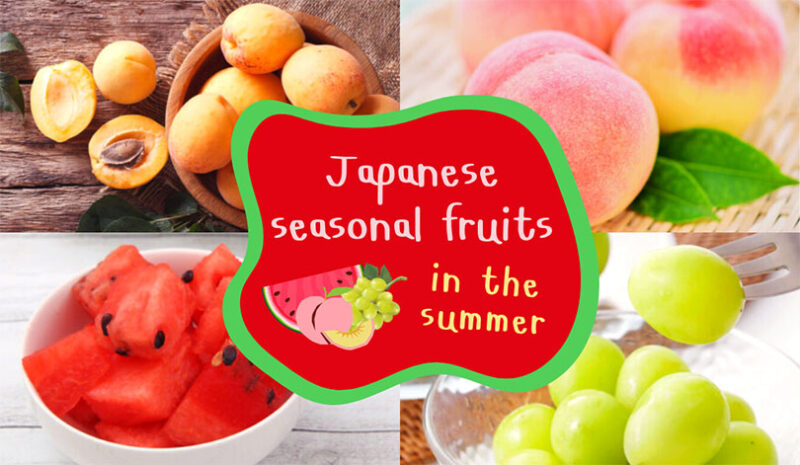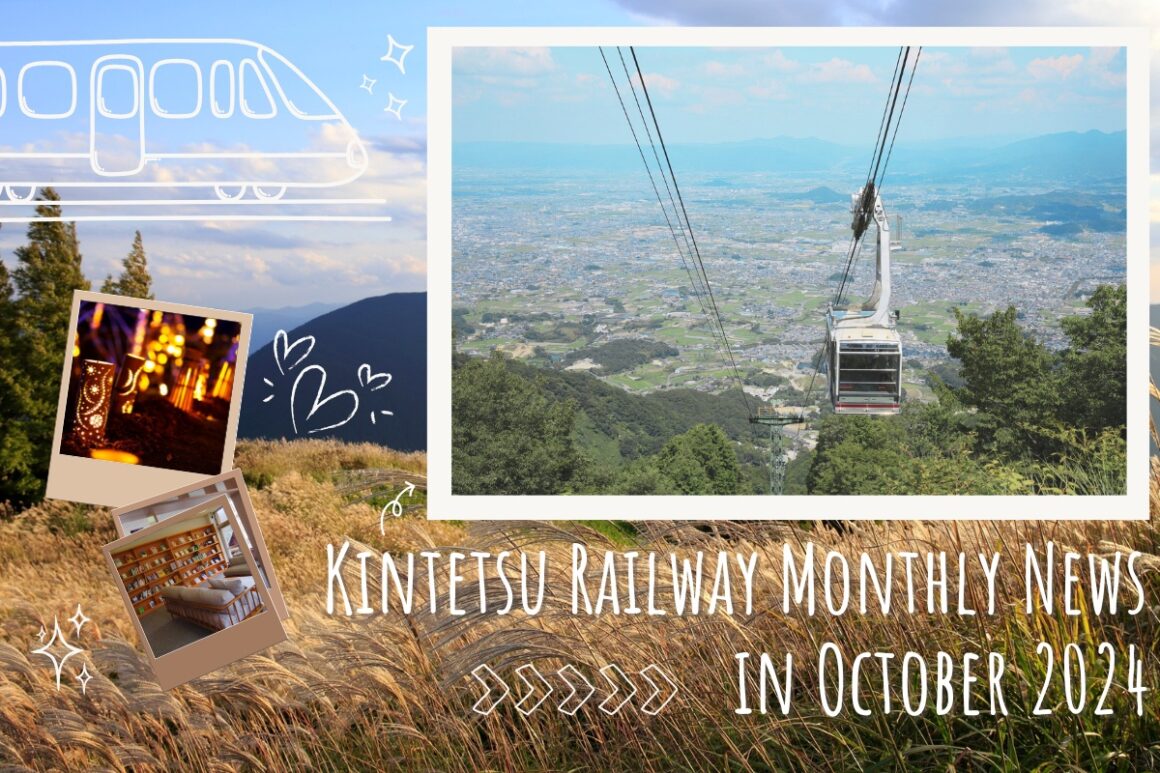10 amazing things to do in Nagasaki, Japan!
Aug 21, 2020
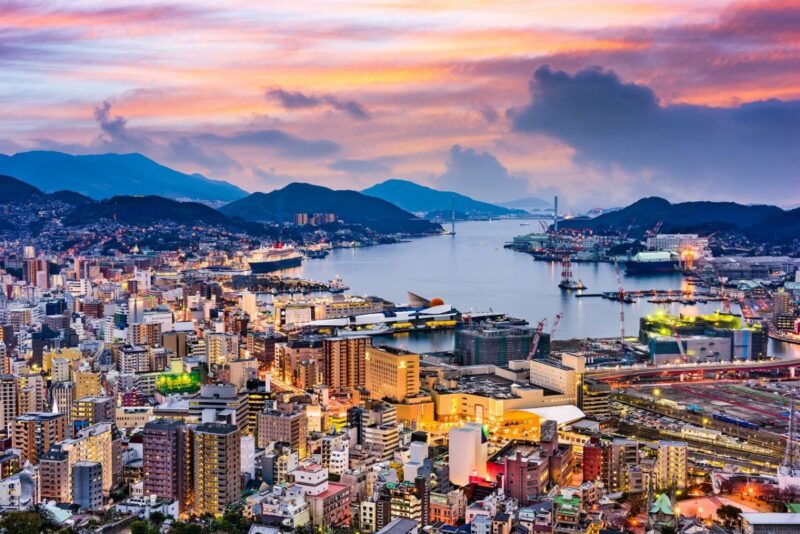
Nagasaki is a beautiful port city on the island of Kyushu, and it’s one of Japan’s closest port cities to the Asian mainland, so it has played a prominent role in foreign trades for many centuries. Located in the countryside, It is often overlooked by most tourists, but it actually has a lot of offer to those looking for extra-ordinariness.
Nagasaki is rich in nature, history, and culture; it’s particularly famous for its peace park, beautiful and tremendous Confucius Shrine, abandoned island, and scrumptious local treats. There’s always something to please everyone in this quiet and lovely prefecture.
Index
Recommended sightseeing spots in Oita:
- Nagasaki Peace Statue
- Nagasaki Atomic Bomb Museum
- Suwa Shrine
- Meganebashi Bridge
- Gunkanjima (Hashima Island)
- Nagasaki Confucius Shrine (Koshi-byo)
- Huis Ten Bosch
- Tenkaiho Observatory
- Shimabara Castle
- Hirado Bridge
- Nagasaki champon
- Turkish rice
- Sara udon
- Sasebo burger
- Castella
How to get there
Nagasaki is accessible by airplanes from major airports, and it takes up to 2 hours depending on the location of your departure. The average ticket price for a one-way flight from Tokyo is around 25,000 yen.
If you have a JR Pass, you can also take the JR Shinkansen (bullet train) to visit the prefecture, but you need to transfer to the limited express train in Fukuoka to go to Nagasaki. The average time needed to travel from Tokyo to Nagasaki is around 8 hours.
Recommended sightseeing spots in Nagasaki
Although Nagasaki is relatively far from Tokyo, this one prefecture of Kyushu Island is worth visiting for its mind-blowing nature and incredible sightseeing spots. From Gunkanjima to Nagasaki Confucius Shrine, here are our picks for the best things to do in Nagasaki, Japan!
1. Nagasaki Peace Statue, a symbol of hope and a memorial for peace

Visiting Nagasaki isn’t complete yet if you forget to stop by the Nagasaki Peace Statue, a bronze gigantic statue completed in 1955 to promote world peace. The statue can be found inside the Nagasaki Peace Park, and each posing made by the statue has special meanings to the locals. The right hand pointing to the sky reminds us of the danger of nuclear weapons, while the extended left hand symbolizes eternal peace.
Nagasaki Peace Statue
Open throughout the year (24 hours)
2. Let’s remember the horrors of a war at Nagasaki Atomic Bomb Museum

The Nagasaki Atomic Bomb Museum is a remembrance to the atomic bombing of Nagasaki, which happened on August 9, 1945 around 11.a.m. The museum covers the history of the bombing in the accessible form of a story, beginning with the disastrous scene of the attack, and leading up to the dropping of the atomic bomb, and also the reconstruction of the city up until today.
The museum itself was originally built in 1955 as a multi-purpose facility, but later converted into the Nagasaki Atomic Bomb Museum in August 1975.
Nagasaki Atomic Bomb Museum
Business hours: April and September to March 8:30 – 17:30 (last entry is at 17:00); May to August 8:30 – 18:30 (last entry is at 18:00); August 7 to August 9 8:30 – 20:00 (last entry is at 19:30)
Closed from December 29 to December 31
Admissions: adults (age 18 and above) 200 yen; age 6 – 18 100 yen
Access: about a 5-minute walk from Hamaguchi-machi tram stop
3. Pray at the most important Shinto shrine in Nagasaki: Suwa Shrine!

Suwa Shrine is the biggest Shinto shrine of Nagasaki, and it is home to the Kunchi, the most important festival of the prefecture.
The shrine’s history dates back to the 1500s, and just like other shrines and temples, Suwa Shrine was destroyed by the Christians, but was rebuilt in 1625 and relocated to its current location in 1648.
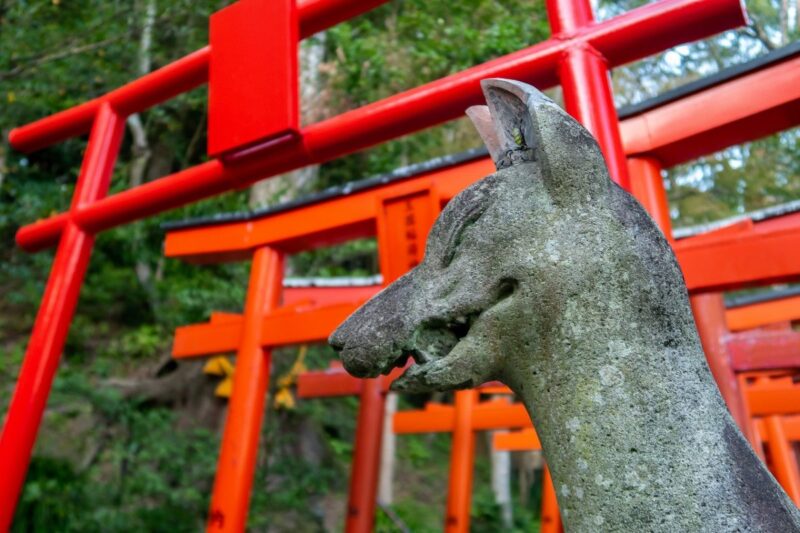
Located at the top of the hill, you need to climb multiple staircases with nearly 200 steps to reach this shrine. Near the torii gates, there are statues of komainu (protective dogs), including the kappa-komainu (water-sprite dogs), which you pray to by flowing water onto the plates on their heads.
Suwa Shrine
Business hours: 8:00 – 17:00
Access: a short walk from Suwajinja-mae tram stop
4. Meganebashi Bridge, an elegant bridge in central Nagasaki

When you’re in Nagasaki, don’t forget to visit Meganebashi Bridge to take some beautiful yet elegant pictures!
Named after the resemblance it has to a pair of spectacles when reflected in the river water, Meganebashi Bridge is perhaps the most remarkable of several stone bridges that span the Nakashima River in downtown Nagasaki!
A Chinese monk named Mokusunyoujo built the bridge in 1634, and later the bridge is designated as an important cultural property by the government.
Meganebashi Bridge
Access: a short walk from the Meganebashi tram stop
5. Visit Gunkanjima, the battleship island
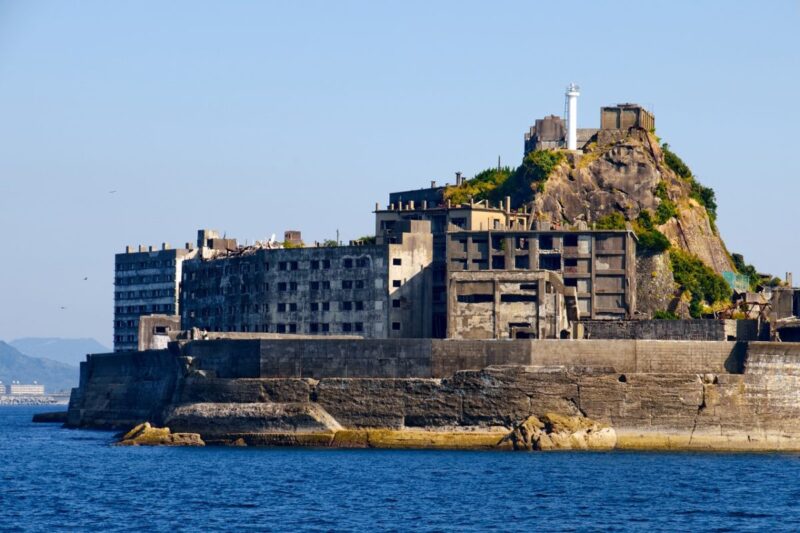
Gunkanjima is an abandoned island in Nagasaki, and many international movies and media, including “Attack on Titan”, have featured the island in one of its scenes.
Located just a 20-kilometer away from Nagasaki Port, the island served as a coal mine until 1974, and is known for its notable abandoned concrete buildings and the surrounding sea wall.
Some local travel companies offer tour boats departing from Nagasaki Port to Gunkanjima, so if you want to explore the island for more details, we strongly suggest contacting the local travel agency to book a tour!
Gunkanjima (Hashima Island)
6. Pray at the Nagasaki Confucius Shrine
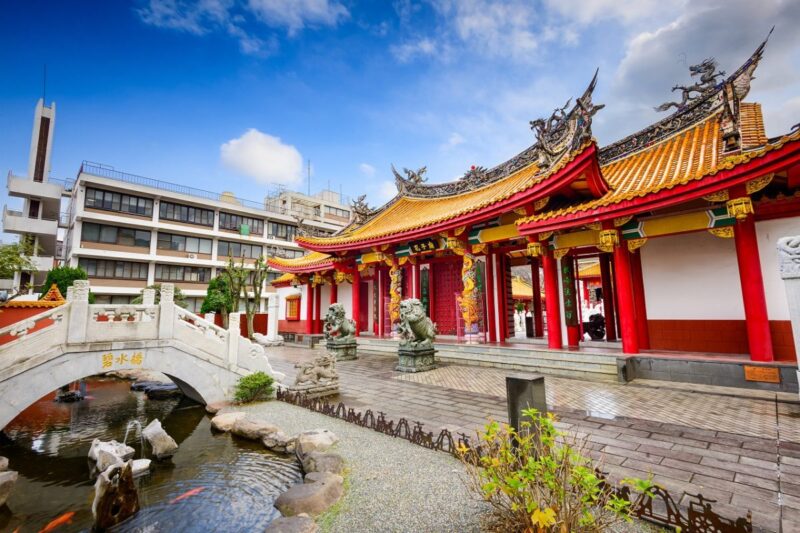
Also called “Koshi-byo (孔子廟)”, Nagasaki Confucius Shrine is the only shrine in the prefecture dedicated to the Confucius. The shrine was built in 1893 by the Chinese community of the prefecture, and is famous for its colorful and atmospheric design.
A small garden with a bridge and a pond is available near the entrance, and the shrine features vibrant yellow roofs and 72 sages statues.
Nagasaki Confucius Shrine (Koshi-byo)
Business hours: 9:30 – 18:00 (last entry at 17:30)
Open throughout the year
Admissions: adults (age 18 and over) 660 yen; high school students (age 15 – 18) 440 yen; elementary and junior high school students (age 6 – 14) 330 yen
Access: about a 3-minute walk from the Oura Catholic Church tram stop
7. Huis Ten Bosch, a little Holland in Nagasaki
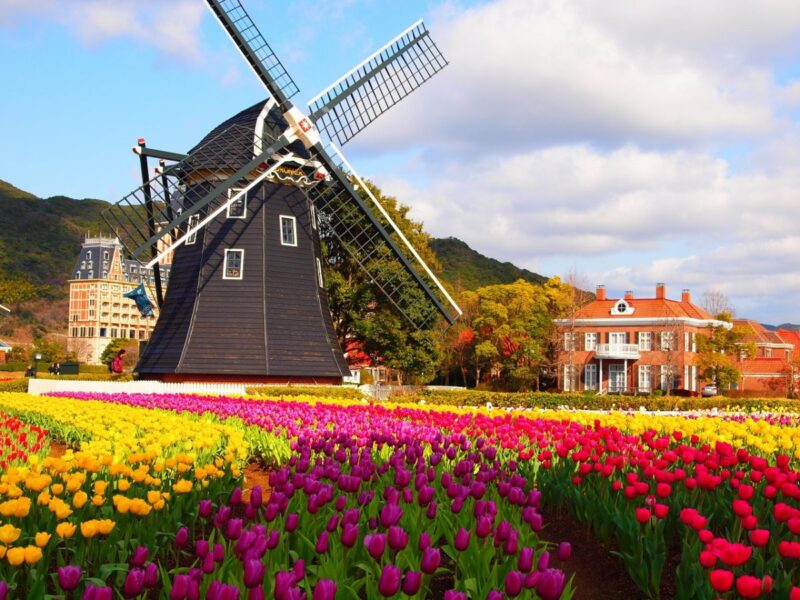
Want to experience something different? How about visiting the little Holland of Nagasaki: Huis Ten Bosch?
Located along the Omura Bay in Sasebo City, Huis Ten Bosch is a Dutch-themed amusement park featuring Dutch-style homes, windmills, wooden clogs, and tulips (when in season).
The theme park is famous for its gorgeous views, fun attractions, mouthwatering meals, and cute merchandise, which are all available in the park.

Hunter2018 / Shutterstock.com
Planning on visiting Huis Ten Bosch with your significant other this winter? Make sure to see its gorgeous winter illumination, which is annually held from November to early May. Huis Ten Bosch winter illumination is known as the world’s biggest winter illumination event, so you should never miss it!
Huis Ten Bosch
Business hours: please refer to the park calendar
Admissions: please refer to this page
Access: please refer to this page
8. Capture the beauty of Kujukushima Islands from Tenkaiho Observatory
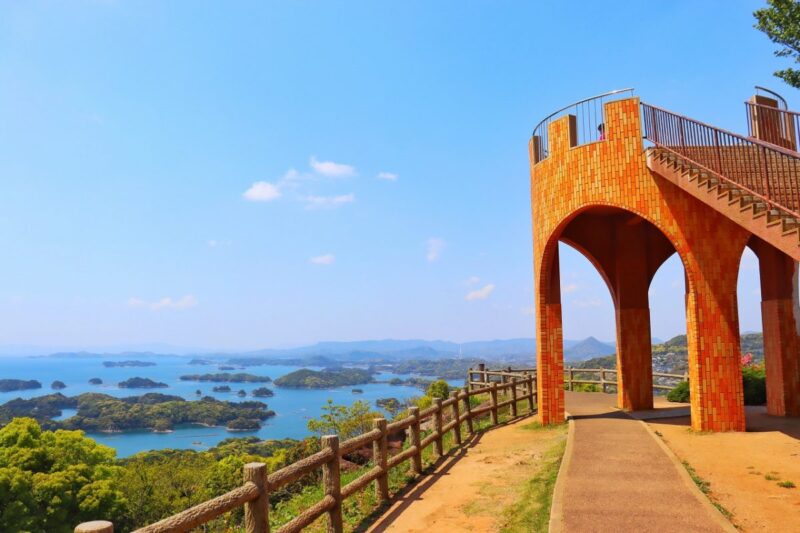
Tenkaiho Observatory is a must-visit spot in Sasebo, especially if you want to capture the best view of the Kujukushima Islands.
In addition to the tremendous view of Kujukushima Islands, the observatory also offers a panoramic view of the flower field beneath it.
Visiting the observatory is always a good idea, especially if you don’t have time to cruise around the islands.
Tenkaiho Observatory
9. Visit the white walled castle: Shimabara Castle

Shimabara Castle is a five-story Japanese castle that is famous for its white walls. Located between Ariake Bay and Mount Unzen, the castle is also known as one of Nagasaki’s best spots for fall foliage.
Built in the beginning of the Edo period (1624), the castle features a beautiful Japanese garden with a lotus pond and a 4 kilometer-long moss wall surrounding the castle. The Japan Castle Foundation named Shimabara Castle as one of the 100 finest castles in Japan.
Shimabara Castle
Business hours: 9:00 – 17:30
Open throughout the year
Admissions: adults (age 18 and above) 440 yen; age 6 – 18 220 yen
Access: about a 10-minute walk from Shimabara Station
10. A picturesque spot for the gram: Hirado Bridge
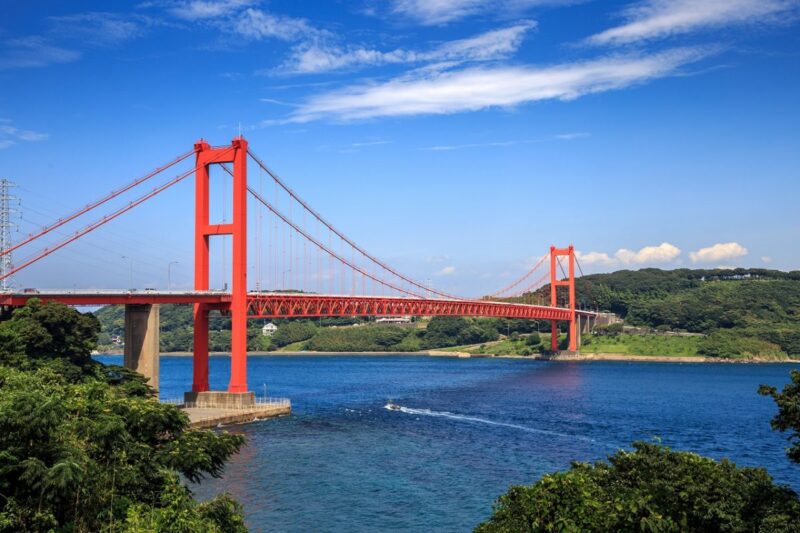
Looking for a photogenic spot for your Instagram? How about visiting Hirado Bridge to capture its tremendous view?
Hirado Bridge is a gigantic red suspension bridge in Nagasaki, and it connects the islands of Hirado and Kyushu. The bridge was completed in 1977 and it has a total length of 665 meters.
Hirado Bridge
Nagasaki’s best local treats
Nagasaki’s food culture is pretty different from other prefectures, as it’s receiving a lot of influences from the Dutch, the Portuguese, and also the Chinese from former inhabitation. The local foods we will be talking about from now on are heavily influenced by the European and the Chinese tastes, while still having their own unique taste.
From the savory Nagasaki champon to the sweet and fluffy Castella cakes, wherever you go, scrumptious local treats await in Nagasaki. Here are our picks for the best foods to try when visiting Nagasaki!
1. Nagasaki champon

Nagasaki champon is the most popular local food of Nagasaki, and it was made by a Chinese chef to cater hungry students studying in the prefecture during the Meiji period. Made of vegetables, meat, seafood, and noodles stir-fried together in a thick soup, Nagasaki champon is supposed to be cheap and tummy-filling.
2. Turkish Rice
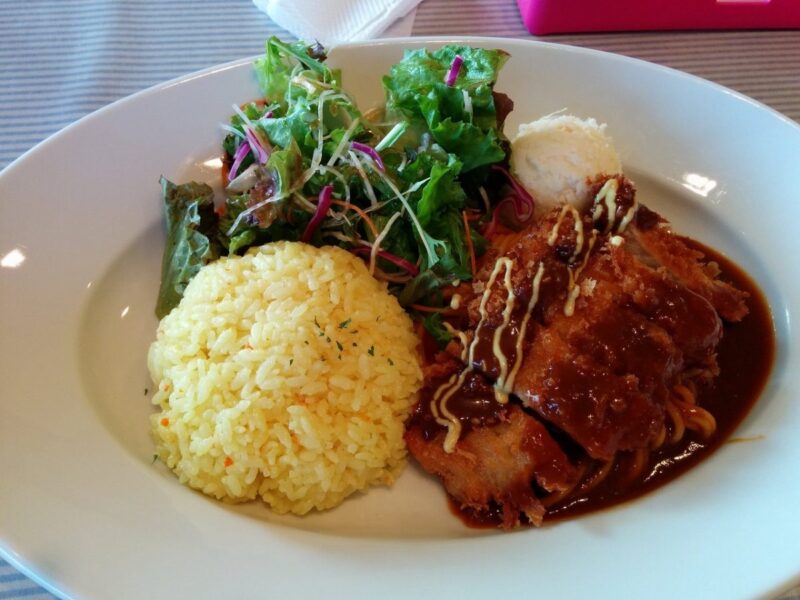
Turkish rice is a local specialty of Nagasaki, where rice pilaf, spaghetti Neapolitan, and tonkatsu (deep-fried pork cutlet) served together on one plate. Falls into the category of yoshoku (Japanese-style western) cuisine, combining these three dishes on one plate is specific to this prefecture only.
3. Sara udon
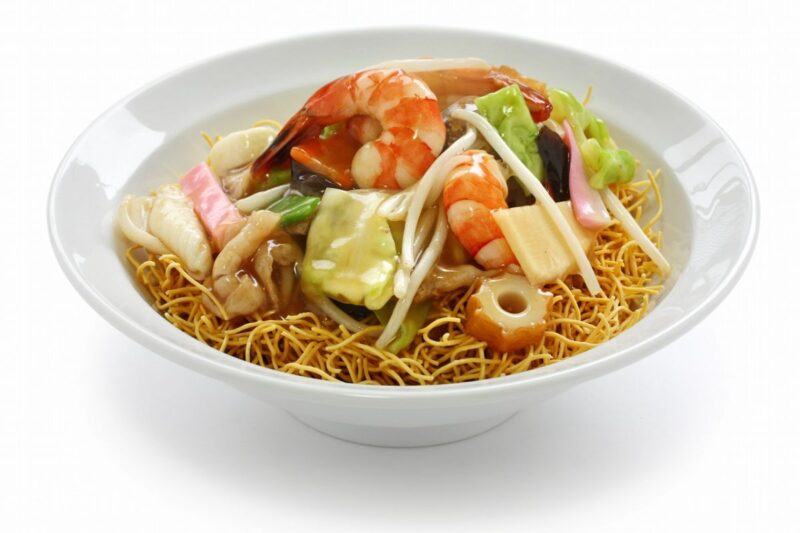
Sara udon (皿うどん) is specific to Nagasaki only, and they are crisp-fried noodles, which can be thin or thick, and topped with stir-fried prawns, squids, pork, and vegetables like bean sprouts and cabbage. Inspired by the Chinese food, sara udon was invented by Chin Heijun, the owner and the founder of a Chinese restaurant called Shikairo.
4. Sasebo burger
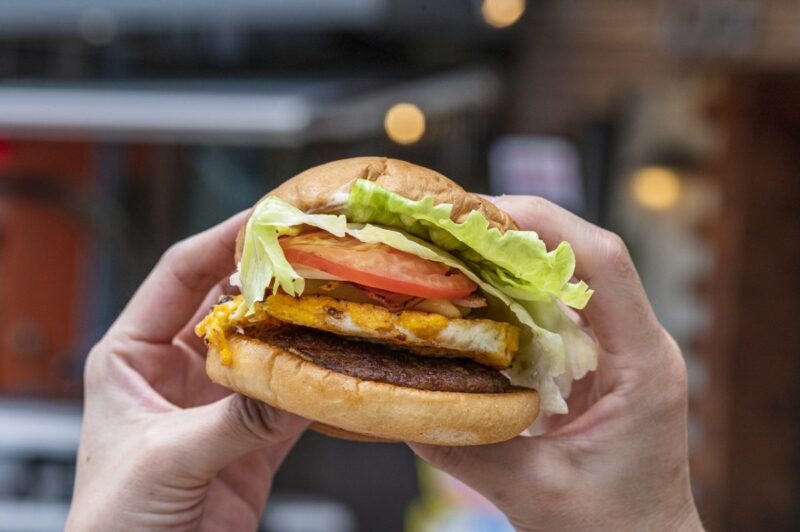
Sasebo is where the American military base settles, and the American Navy Force invented Sasebo Burger in the 1950s. Originally offered at burger restaurants in the area, the hamburger was created based on American military recipes, and there is a certification system marked by a hamburger character that proves the restaurant is using local ingredients and offering original and handmade fresh burgers. All burgers come in bigger size than the Japanese burgers in general, but the ingredients and sauce change depending on the restaurant.
5. Castella
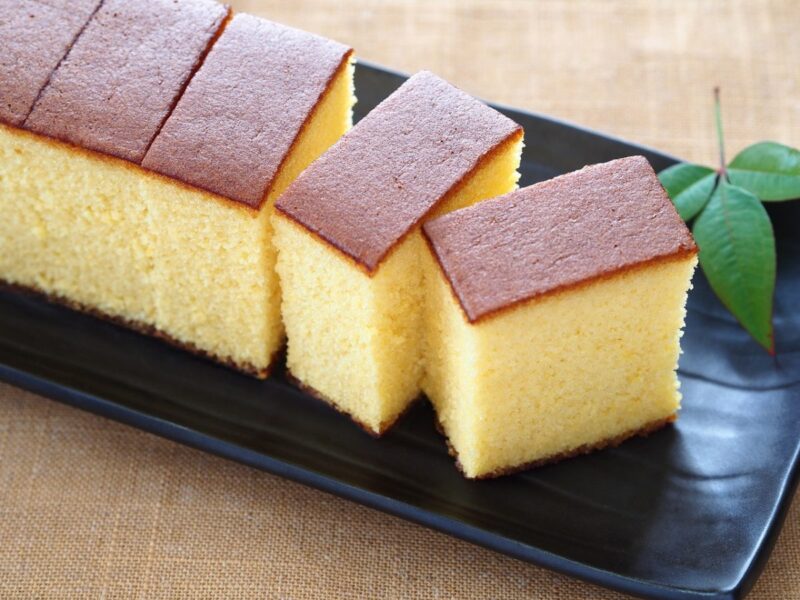
Castella is a sweet and moist sponge cake, which was invented in Nagasaki in the mid-16 century using a recipe originally introduced by Portuguese missionaries.
Usually made of sugar, flour, eggs, and starchy syrup, Nagasaki castella has a soft, moist, and airy texture. Castella cakes are available in many different types of flavors, such as chocolate, green tea, brown sugar, and honey. How about purchasing this amazing fluffy cake for your friends and family back home?
Now that you have an idea of how many fabulous spots are in Nagasaki, all you have to do is plan your itinerary to enjoy unforgettable experiences in Nagasaki!

